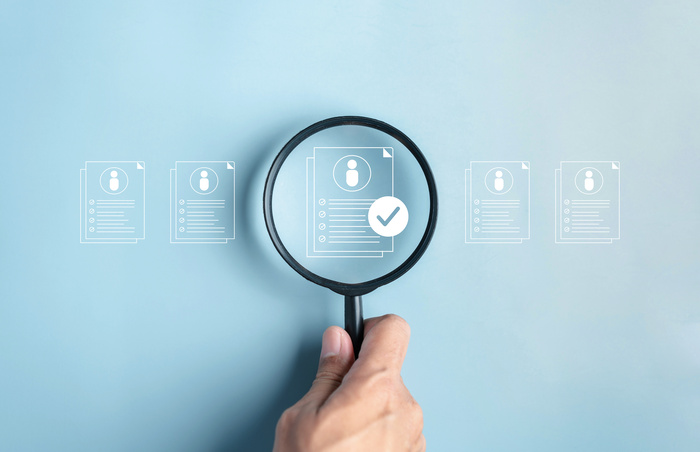Anúncios
Running out of time? Maybe the problem isn’t the clock

You wake up, check your phone, and are immediately hit by a wave of notifications. The day starts with handling pending tasks, jumping from one thing to another, replying to messages, trying to stay on top of everything — and suddenly, the day is over.
And that to-do list? Still pretty much the same. If this sounds familiar, you’re not alone.
The good news? There’s a way out. And no, it doesn’t involve waking up at 5 a.m. or becoming a slave to your schedule. The answer is closer than you think: technology. That’s right — when used wisely, it can be your greatest ally for gaining time, focus, and efficiency.
In this article, you’ll learn how to turn your phone into a true personal assistant. We’ll show you the apps that really make a difference in the productivity of those who want to do more — and better. Ready to change the game?
The New Age of Productivity: Smart Efficiency
Technology is no longer just a tool to access information. Today, it’s a real engine for transformation, revolutionizing how we work, learn, and relate to time.
What once required paper, manual spreadsheets, or dozens of exchanged emails, can now be handled in just a few clicks — and in real time.
This new age of productivity is defined by task automation, remote access to information, and integrated platforms that optimize workflow.
Best of all: it’s all available at your fingertips through smart, often free, mobile apps.
Why Use Apps to Be More Productive?
The big advantage of productivity apps lies in their ability to simplify your routine, creating a support system that reduces wasted time and enhances focus.
While traditional methods require constant mental effort to remember tasks, deadlines, and commitments, apps function like virtual assistants — organizing, notifying, delegating, and in many cases, even performing tasks for you.
In addition, many of these apps incorporate proven productivity methodologies like the Pomodoro Technique, GTD (Getting Things Done), time blocking, among others.
They help break large tasks into smaller steps, prioritize what truly matters, and eliminate distractions.
The Apps That Make a Difference — and How They Impact Your Routine
1. Task Organization and Planning
Who hasn’t felt mentally blocked by an overwhelming list of tasks? Apps like Todoist, Notion, and Trello are real antidotes to chaos.
Todoist is ideal for task lists with deadlines and priority levels. It lets you segment projects, track progress, and receive automated reminders. Notion is more robust — a complete dashboard for notes, tasks, calendars, and documents.
Perfect for anyone who wants everything centralized in one place. Trello, on the other hand, uses a board and card system that makes it easy to visualize progress — especially in team settings.
These apps help build a clear map of what needs to be done, easing anxiety and increasing mental clarity.
2. Focus and Time Management
Staying focused is one of the biggest challenges of modern productivity. Constant notifications, social media, and overstimulation make it easy to get distracted. Apps like Forest, Focus To-Do, and RescueTime are great allies here.
Forest uses a playful approach: each focus session plants a virtual tree. If you leave the app, the tree dies. This builds a sense of responsibility and visual reward, helping you stay focused.
Focus To-Do combines the Pomodoro technique with task management, encouraging concentrated work sessions alternated with scheduled breaks. RescueTime analyzes how you’re spending time on your computer and phone, offering detailed reports that help identify — and fix — unproductive habits.
These apps not only help improve focus but also promote self-awareness and time-use re-education.
3. Collaboration and Teamwork
If you work in a team — remotely or in person — you need tools that ensure efficient communication, task transparency, and smooth integration. That’s where apps like Slack, Asana, and Microsoft Teams come in.
Slack is one of the most popular tools for business communication. It lets you create topic-specific channels, share files, integrate with other tools, and keep conversations organized.
Asana focuses on project management, allowing task delegation, deadline tracking, and real-time monitoring of goals. Microsoft Teams goes beyond chat: it offers video conferencing, document sharing, and full integration with the Office 365 suite.
These tools reduce rework, improve alignment among team members, and significantly increase process efficiency.
4. Task Automation
Automation is one of the smartest ways to save time. Instead of repeating the same actions daily, why not let an app do it for you? Tools like Zapier and IFTTT make it possible.
With Zapier, you can connect different apps and create automations like: “when I receive an email with an attachment, save it automatically to Google Drive” or “when I complete a task in Trello, create a Google Calendar event.”
IFTTT works similarly, with more focus on personal and everyday use — smart home automation, social media, and device control.
Automation frees up your schedule for more strategic tasks and significantly reduces human error.
5. Capturing Ideas and Notes
Not every idea comes at the perfect moment. That’s why it’s essential to have an app handy to capture thoughts, insights, and reminders before they disappear. Evernote and Google Keep excel at this.
Evernote is highly complete, offering organization by notebooks, tags, smart search, and even document scanning.
Google Keep bets on simplicity: quick notes, to-do lists, and location-based reminders, all synced with your Google account.
With these apps, no good idea gets lost — and that, by itself, is a productivity win.
How to Choose the Right App for You
With so many options available, it’s easy to feel overwhelmed. The key to choosing well is understanding your personal needs. Before downloading every trending app, ask yourself:
- What’s my biggest challenge today: focus, organization, communication, automation, or something else?
- Do I prefer simple interfaces or more customizable tools?
- Am I willing to pay for premium features or looking for free solutions?
- Do I need it to integrate with other tools I already use?
Try them out for a few days. Many apps offer free versions robust enough for testing. Evaluate how they impact your routine before committing long-term.
Use Technology as an Ally, Not a Distraction
It’s essential to remember: being productive isn’t the same as being busy all the time. Technology should help you gain more free time — not take it away.
If you find yourself swapping manual overload for a barrage of notifications and digital pressure, it’s time to reassess your app use.
Set specific times to review tasks, avoid leaving all alerts on, and respect your moments of rest.
Techniques like time blocking and the 52/17 rule (52 minutes of work, 17 of rest) work wonderfully when paired with the right digital tools.
Conclusion: Your Productivity Deserves an Upgrade
Embracing technology as your productivity ally is a strategic step toward living with more lightness and efficiency. With the right apps, you can get organized, stay focused, and achieve more — without sacrificing quality of life.
But being productive also means making room for what truly matters — and for many, that means the next step in their career. If you’re looking for a new job opportunity or want to stand out in the job market, technology can help with that too.
In our next article, we’ll explore the top tools and platforms to find jobs faster, more strategically, and with greater results.
You’ll learn how to optimize your resume, set up job alerts, automate applications, and even prepare for interviews — all with the power of technology.
Recommended Content
